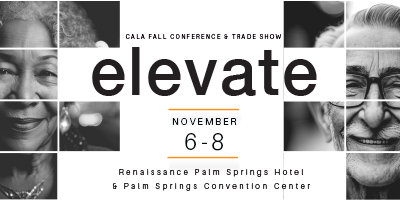What are RCFEs?
Residential Care Facilities for the Elderly (RCFEs), which encompass Assisted Living, Memory Care, and Continuing Care Retirement Communities (CCRCs), are essential components of California’s care continuum, helping to care for a significant portion of the state’s growing older population.
RCFEs provide 24-hour care and supervision in a residential setting for older adults who need assistance but do not require around-the-clock nursing care. Communities meeting additional staff training, programming, and physical plant requirements to provide housing and services to residents living with dementia are commonly known as Memory Care communities. Assisted Living can also be found in a CCRC as part of a continuum of care typically provided in one location along with independent living and skilled nursing.
According to the Department of Social Services (DSS)1, California currently has over 7400 licensed RCFEs that can provide a home and care for more than 185,000 residents. Based on projections by the California Department of Finance2, that accounts for 20 percent of the state’s 85-plus population.
Seventeen percent of California’s RCFEs are licensed to care for 16 or more residents; these communities serve 79 percent of the state’s RCFE residents. Eighty-three percent of RCFEs are small communities licensed to serve up to 15 residents; this type of RCFE serves 21 percent of California’s residents.
About 600 California RCFEs are members of the California Assisted Living Association (CALA), which helps support the delivery of quality service and care by providing tools and resources, continuing education, and advocacy. CALA-member communities serve about thirty percent of the state’s RCFE residents.
What do residents think?
ProMatura, a global market research firm, conducted the first-of-its-kind study of California’s residents and family members3. The study, commissioned by CALA, revealed the positive impact that California’s Assisted Living and Memory Care communities are having in the lives of residents. An overwhelming majority of residents—98 percent—said the staff members in their communities were friendly, 95 percent said they were comfortable with the people who work and reside in their community, and 94 percent said they receive the help they need and the privacy they want. When asked whether they felt safe and secure in their community, 95 percent of residents agreed. In conclusion, the study found that RCFEs provide a high quality of life for residents by meeting their needs with respect and care.
What does it cost?
According to a 2019 Genworth report4, Assisted Living in California costs an average of $4500 per month.
The typical payer source is the resident or family. Some use long-term care insurance, Veteran’s Benefits, or SSI/SSP. In California, a limited number of older adults in 15 counties are able to receive care through a Medi-Cal Assisted Living Waiver Program.
Fees can be structured in different ways. Some communities use a tiered pricing model with bundled services for different levels of needed care. Other communities charge one all-inclusive rate, use an al la carte/fee-for-service system, or charge by the hour.
How is it growing?
In response to the aging of the population and consumer demand, the capacity to care for residents has grown steadily over the past decade. Since 2007, DSS5 reports that RCFEs in California added the capacity to care for an additional 20,000 seniors. The number of small communities caring for up to 15 residents has decreased by about 12 percent, and the number of communities caring for 16 or more residents has increased by about seven percent.
According to the California State Plan on Aging6, California is home to more than seven million people age 60 or older. By 2060, that population is expected to reach 14.7 million, an increase of 88 percent from 2016. In addition, the population of Californians 85 and older is expected to grow from about 600,000 in 2010 to over 2.25 million in 2050. As those numbers increase, so too will the demand for the type of quality care and services found in California’s Assisted Living, Memory Care, and Continuing Care Retirement Communities.
1 Community Care Licensing Division (2018): RCFE/CCRC Facility List, requested via mail. California Department of Social Services.
2 State Population Projections (2010-2060): Total Population by Age. California Department of Finance, January 2018.
3 California’s Assisted Living Communities Provide Quality of Life to Residents and Family Members. ProMatura, 2016.
4 Genworth Cost of Care Survey 2019. Genworth Financial, 2019. Accessed October 17, 2019.
5 Community Care Licensing Division (2005-2018): RCFE/CCRC Facility List, requested via mail. California Department of Social Services.
6 California State Plan on Aging: 2017-2021. California Department of Aging, 2017.

